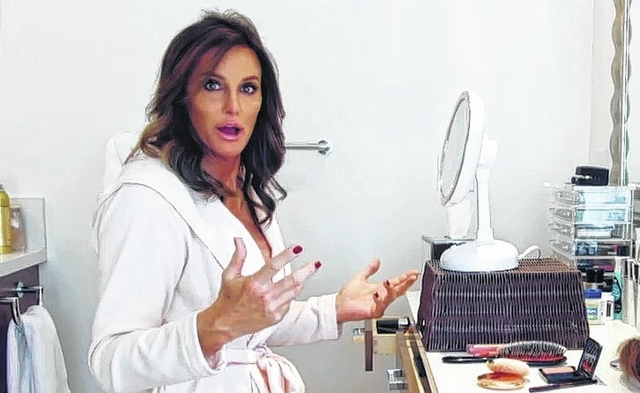




Few people know Shawn Ebert of Wilkes-Barre by his proper name. Most know him as Estella Sweet; a fiercely stunning female impersonator with a larger-than-life persona.
Weekender recently sat down with Ebert at Heat Nightclub in downtown Wilkes-Barre — as a male — to discuss the trending topic of gender identity.
Last week, when the world was introduced to Caitlyn Jenner, formerly known as Bruce, social media blew up with reactions from both supporters and those who were frankly disgusted. The world is still getting used to dialogue about transgenderism. Like it or not, the issue isn’t going anywhere. Sure, Chaz Bono was known as Chastity for years, but her fan-base didn’t reach the masses. Jenner’s did.
For some, it might be a lot to understand. Though sex reassignment surgeries were known since Christine Jorgensen, in the 1950s, it was never really talked about by familiar faces — until reality television’s favorite dad (Jenner) decided to tell the world he would make the transition to womanhood.
Ebert discussed his role in the transgender community, why he dresses as a woman but is perfectly comfortable having a penis and his thoughts on Jenner’s impact for his community — and the world.
Weekender: Have you seen the pictures of Caitlyn Jenner for the July issue of Vanity Fair?
Shawn Ebert: I did. I think she’s absolutely stunning. I think it’s inspirational to know and see that she can finally be comfortable in her own skin.
W: Are you surprised by how beautiful she looks knowing she was Bruce Jenner?
SE: Absolutely not. Anybody with that much money can look beautiful. Transgender people with a lot of money can afford to get all the hormones and all the surgeries to look how they want to look. Transgender people who fall under the poverty line — or even if they’re of moderate means — don’t have the money to do that. A friend of mine made a really good point on Facebook the other day, actually. He made a statement that all the exposure that Bruce Jenner is getting is great as far as educating people on the transgender community, but one thing you have to remember is that’s her story. Every transgender person lives their own story and it might not be as glamorous as Bruce Jenner’s.
W: Do you think Caitlyn Jenner’s story is so glamorous that she could be setting up a false hope for those transitioning or considering transitioning?
SE: I think it’s a double-edged sword because Caitlyn is being an activist and she’s bringing the issue to light. It’s a positive step forward, but not everybody can afford to look like a movie star. People with money, like Caitlyn Jenner, have it easier.
W: Do you think someone in Northeastern Pennsylvania would have a more difficult transition than Jenner?
SE: Absolutely. I think it’s comparable to anyone who wants to be someone famous. Not everyone can afford to have their teeth fixed or their breasts augmented — especially in this area — right down to being able to afford to go tanning. Having the money to afford to change your appearance is going to make it easier on anybody to transition. And the better you look, the more accepting people will be of your transition. That’s why there’s pressure on our law-makers to make transgenderism covered under basic medical insurance; so they don’t have to make sacrifices.
W: So you think it should be the government’s responsibility to cover gender reassignment under basic medical insurance?
SE: Absolutely. Bruce Jenner didn’t have to sacrifice his life to be who he wanted to be. On the other hand, he is sacrificing his privacy. People who want to transition have to make sacrifices to get the money to transition. People should be whoever they feel they should be; not just if they could afford it.
W: You said every transgender person has their own story. We talked about Caitlyn’s. When we talk about your story, can we clarify that you’re not transgender, but a female impersonator?
SE: I identify myself as part of the transgender community, actually, but I’m not a transgender person.
W: That could be confusing to a lot of people. Could you explain the difference?
SE: Transgender is used as an umbrella term to identify anybody who dresses as the opposite sex or anybody that questions their gender. I dress as the opposite sex, but I don’t feel as though I was born into the wrong body.
W: You have a penis and that doesn’t feel out of place to you even though you enjoy dressing up as a woman?
SE: I personally don’t feel that anything about me is a mistake. I’m very comfortable with the way I am.
W: Why do you impersonate women if you’re comfortable being a man?
SE: It makes me feel like I’m special. Not only that, but I use “Estella” to inspire other people. If an overweight, middle-aged man can put on a dress and a wig and feel like a movie star, they can be anybody they want.
W: You’re middle-aged?
SE: I’m 33.
W: That’s not middle-aged.
SE: Yes it is.
W: When people see you, they might think you want to be like Caitlyn Jenner. What do you want people in NEPA to understand about your gender identity; about gender identity in general?
Sweet: Rather than people understanding gender identity, people should just learn to be accepting of it. Just accept that someone is happy being who they are.




